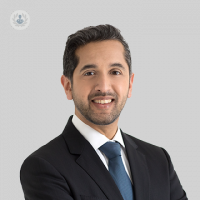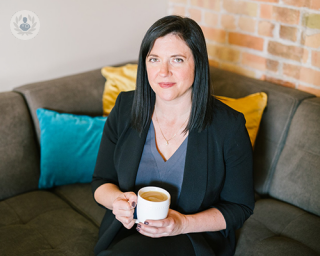Therapeutic mammoplasty
What is a therapeutic mammoplasty?
A therapeutic mammoplasty is a surgical procedure to remove breast cancer (therapeutic) and reshape (mammoplasty) the breast by removing tissue and skin. This operation is carried out as both a form of treatment of breast cancer and to try to preserve a normal breast shape.

After the cancer has been removed and your breast has been remodelled by a surgeon, your breast will appear slightly smaller and more uplifted. If this results in a noticeable size difference between your breasts, then the other breast may need to be reduced (or reshaped) so they appear symmetrical. This is usually a procedure carried out at a later date.
A therapeutic mammoplasty is not the same as a breast reconstruction in which tissue from another part of the body is used to fill the space where the cancer was. In this procedure, the tissue is only removed, so it's only suitable for women who have moderate to large-sized breasts.
What are the benefits of this procedure?
There are several benefits of having a therapeutic mammoplasty:
- You won't need to lose your breast as you would in a mastectomy and the cancer is removed completely.
- Unlike a lumpectomy, you are much less likely to develop a small deformity of the breast following the operation. This procedure is aimed to produce a normal breast shape.
- For women who have particularly large breasts, this procedure provides a reduction in size which can be an extra benefit.
- Reducing the size of your breast can make radiotherapy treatment easier and more effective.
What are the risks?
As with every surgical procedure, a therapeutic mammoplasty carries some risks. Some common side-effects include nausea and vomiting following anaesthesia. Your breasts may also be sore, swollen and bruised for a while after the operation. There are, however, some more specific complications that might occur but are rare:
- Infection in the wound
- Delayed healing
- Haematoma
- Complications with the nipple
- Seroma
What happens during the procedure?
On the day of the operation, your surgeon will draw some markings on your breasts and may take photographs. You will also meet the anaesthetist.
During the operation, the tumour and surrounding tissue are removed first. Then, the breast is reshaped and the nipple is repositioned. The full extent of the surgery depends on the technique used, but typically there are three distinct ways of performing this operation:
- Round block mammoplasty
- Vertical scar mammoplasty
- Wise pattern mammoplasty
The same incisions are made as before, however, an extra one is made along the folder of the breast. Your surgeon can use this technique to remove cancer from anywhere inside the breast. It is very common and leaves a scar in the shape of an anchor.
Aftercare
Your doctor will advise you on how to take care of your wound and breasts following surgery. You should wear a soft, supportive bra right after the operation for up to six weeks until the breast has fully healed.
Avoid driving, any heavy lifting, and strenuous exercise until you feel well enough to do so. You will also need to take time off work, usually around four weeks - so plan this with your employer in advance. During the night, you should sleep on your back for around two weeks.
Your surgeon will ask to see you again in around two weeks to check how well the breast is healing and discuss the results with you.
If at any point you feel unwell with a high temperature, you are vomiting or you see significant redness of the skin, then either go to your GP or the emergency out of hours service. You may have an infection and a doctor will need to prescribe you some antibiotics.







